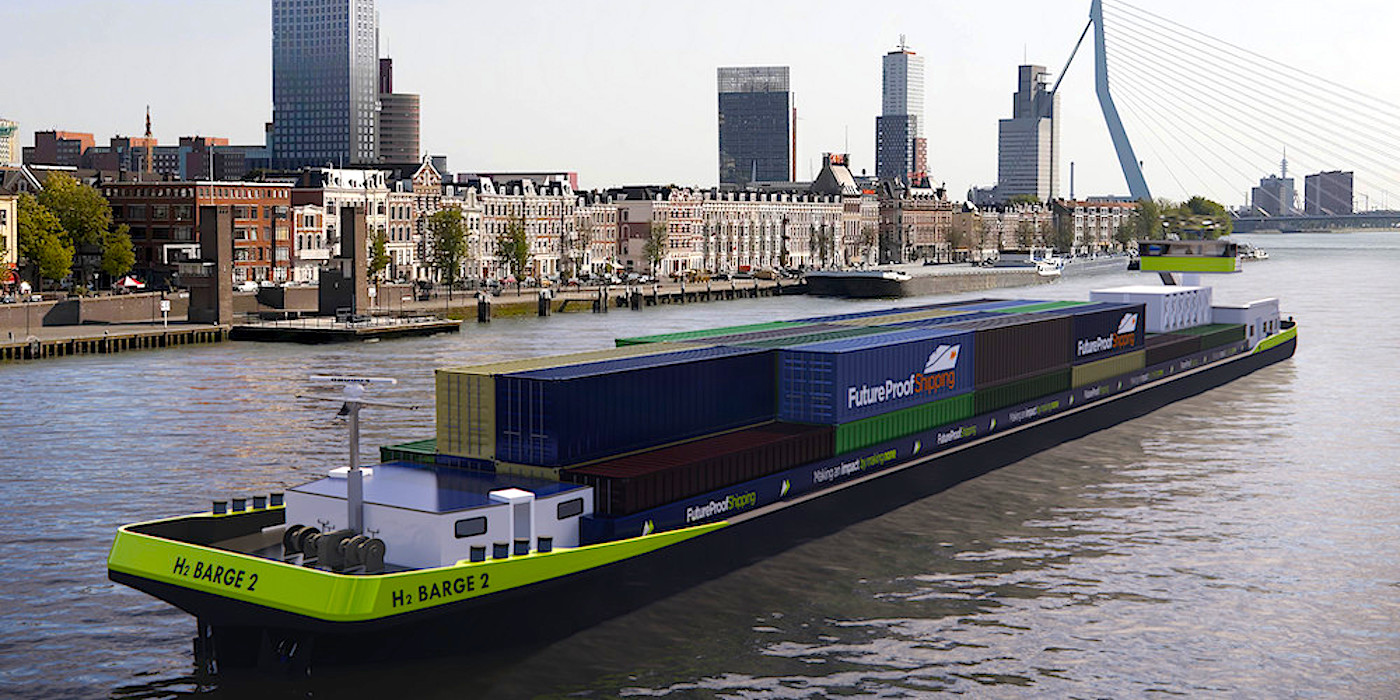
The H2 Barge 2 is a hydrogen fuel-cell powered ship designed to transport containers on the Rhine between Rotterdam (NL) and Duisburg (DE) with zero emissions that could represent a massive reduction in carbon emissions.
Developed by Dutch shipowner Future Proof Shipping (FPS) and funded by the EU Flagships project and the Interreg ZEM Ports NS project, the H2 Barge 2 (formerly Fenny 1 and FPS Waal) was built as a conventionally powered containership before being converted to electric drive – with the 1.2 MW of power to drive the vessel’s motors coming from six PEM fuel cells, hydrogen storage, and a number of battery packs placed below deck.
Compared to its previous incarnations, the H2 Barge 2 is expected to reduce 3,000 tons of CO2 annually while sailing a comparable amount of shipping containers up and down the the Rhine. And, in doing so (the company says), the vessel proves that the European river fleet can be, “fully zero emission already today.”
“Inland waterways are important for freight transport in Europe, we are thrilled to see a high-power container vessel being converted to zero-emission,” says Mirela Atanasiu, Executive Director ad interim of Clean Hydrogen Partnership. “The H2 Barge 2 will bring knowledge on how to retrofit vessels from diesel combustion to zero-emission alternatives, by using batteries in combination with green hydrogen in a fuel cell. I am proud to see that our funding contributes to the decarbonization of freight transport in the European Union.”
The second demonstrator vessel in the EU Flagships project, a similar vessel named Zulu 06, is set to be deployed in Paris later this year.
Electrek’s Take
It’s been said before: hydrogen is dead in the water when it comes to passenger cars, but the same isn’t obviously true on the heavy equipment side of things – and it doesn’t get any heavier than container ships.
Whether at shipyards, drayage terminals, rock quarries, or on the water, thousands of kWhs’ worth of work need to be done day-in and day-out to keep things moving, and the energy density of batteries just isn’t yet there. Despite that, hydrogen’s heavy costs – both carbon and monetary – have kept it an impractical option … and while that’s starting to change, the batteries are getting better too.
FTC: We use income earning auto affiliate links. More.


Comments